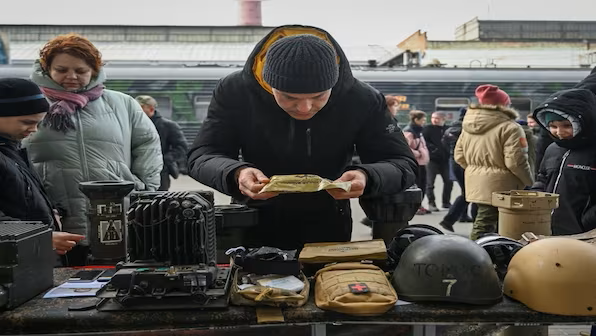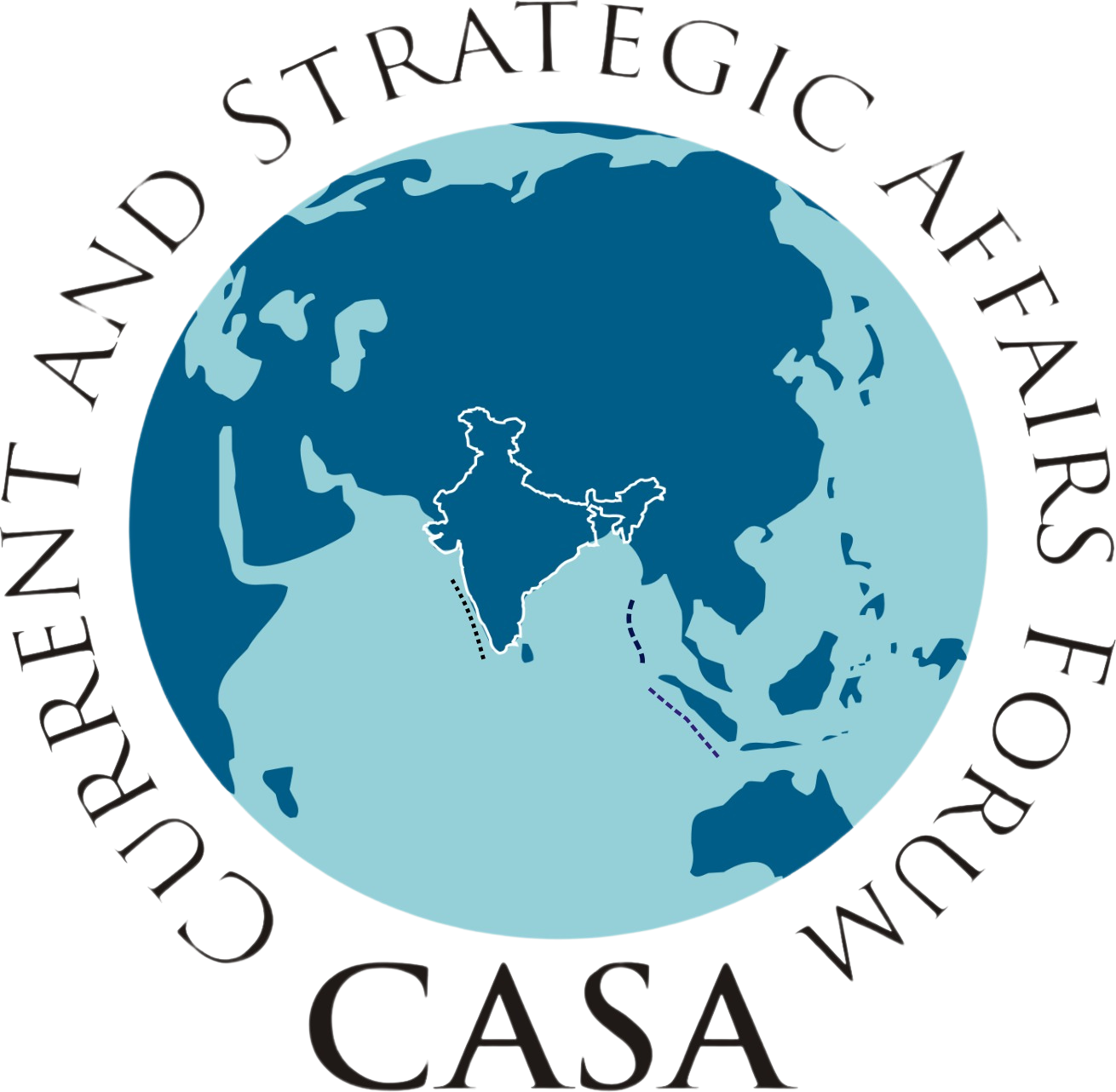How is Russia-Ukraine war becoming a frozen conflict forever
- March 21, 2024
- Posted by: admin
- Categories: Russia, Ukraine

The war in Ukraine is an example of a fight that grinds on not because of strategic dilemmas alone but because both sides find the idea of terminating the conflict impossible
Peace is costly. Only thing is war costs more (Shimon Peres, 2015).
As the war in Ukraine is entering its third year, few observers would have imagined that it would still be raging. After the dramatic swings in territorial control during 2022, when the Ukrainian military managed to recapture parts of the Kharkiv region and the city of Kherson, the war settled into a positional and attritional grind in 2023, with both the tempo of operations and the intensity reducing.Advertisement
The Ukrainian counteroffensive failed to deliver substantial territorial gains. The momentum generated by Ukraine’s success in the first year of the conflict has given way to a sense that, despite ongoing fighting, the frontline is not moving and the risk of a forever frozen conflict is growing.
The US is wrangling over funding, and although most European leaders remain firm in their support for Kyiv, it is becoming increasingly difficult for them to maintain that same level of support among their public. Cost-of-living concerns are leading many Europeans to question the sustainability of continued funding for Ukraine, and the outbreak of war in the Gaza Strip has divided the West’s attention.You May LikeTake Benefit Of A Balanced Portfolio With IPru MAAFICICI Prudential MFClick Here by TaboolaSponsored Links
Reasons for Long Wars
The Ukraine War has upended many of the theories of war, including the one that modern wars will be short and swift. Why is this war dragging on? The fact is that war is the worst way to settle political differences. As the costs of fighting become apparent, adversaries usually look for an agreement to end the conflict.Advertisement
Many wars, of course, do last longer. There are many reasons why compromises fail to take place. These could range from public opinion against a compromise to leaders thinking that a defeat or the end of a conflict could threaten their own position, particularly when there is a lack of understanding between one’s own strength and that of the enemy, as articulated by Sun Tzu many centuries ago, leading to underestimating the damaging consequences of the conflict and when there is a fear of an existential threat.Advertisement
This manifests itself with Russia being uncomfortable with NATO at their doorstep and Ukraine fearing the loss of their sovereignty. All these factors have kept the war going.
Of course, the above reasons are rooted in a situation where there is not a clash of ideologies such as communism versus capitalism, autocracies versus liberal democracies, or on religious grounds. Peace is impossible if ideological barriers prevent negotiations. Such values and ideas will continue to play a leading role in the wars waged in the future.Advertisement
The West has grown more rights-based over time, resulting in its defending certain liberal principles, whatever the consequences.
The Situation Today
Compared with last year, Ukraine faces two challenges. Militarily, it has been pushed due to the failure of its counter-offensive and by the sheer force of troops in Russia’s favour. A Ukrainian victory will require strategic endurance and vision, as well as the ability to sustain losses.Advertisement
Apart from this, the West—and particularly the US—has struggled to provide the military aid Ukraine needs to sustain the fight. Ukraine can’t turn the military tide without more Western military aid, but it has struggled to get more military aid unless it can demonstrate that it can win on the battlefield.Advertisement
The two key challenges are obvious. The first is how to get more weapons to Ukraine. The second is how Europeans can defend themselves without US backing.
Russia, on the other hand, is now operating from a position of strength. After the capture of Bakhmut and the creation of the Surovikin Line, they spent 2023 consolidating their positions. Coupled with improvements in shortening the time between target detection and the carrying out of battlefield strikes, the Ukrainians faced an adversary in 2023 that was very different from the one it faced in 2022.Advertisement
To overcome this evolved enemy, Ukraine was forced to adapt its tactics, technology, and operations, in part by sending some troops to Poland and other European countries for additional combined arms training before the counteroffensive began. But Kyiv’s efforts were still insufficient for the task of retaking more of the South.Advertisement
This year, the Russians have met with success by capturing Avdiivka. The now-destroyed city carved a bulge in the front line that undermined critical Russian logistical operations. It sits only a few miles from the city of Donetsk, which Russia has occupied since 2014. Its fall allows the Russian military to move troops and equipment more efficiently as it presses in other directions.Advertisement
There is another chink that has been exposed with the removal of General Zalhuzhny, which was the differences regarding the new conscription law that would increase the size of the military. He had proposed mobilising close to 500,000 troops, a figure President Zelensky viewed as impractical given the scarcity of uniforms, guns, and training facilities and the potential challenges related to recruitment.Advertisement
President Zelensky said publicly that Ukraine lacks the funds to pay so many new conscripts. General Zaluzhny countered that Ukraine is already short of forces because of mounting casualties and needs to match the 400,000 new soldiers that Russia plans to mobilise.
In an opinion piece for CNN, General Zaluzhny wrote about “the inability of state institutions in Ukraine to improve the manpower levels of our Armed Forces without the use of unpopular measures”.Advertisement
The issue is that Ukraine cannot be faced with the prospect of having Western weapons without soldiers to operate them or soldiers without weapons in case the ‘air bubble’ regarding the supply of these weapons is overcome. Both of these are disastrous. President Zelensky’s famous response, “I need ammunition, not a ride,” to a US offer to evacuate him in 2022 holds just as true today. Without a constant stream of military aid, Ukrainian resistance will be very hard to sustain.
Negotiating a Ceasefire
The Ukrainians fear that if they do settle the issue, they will be negotiating from a position of weakness, having lost a considerable portion of their land to Russia. The fear that Russia will simply regroup and attack again also remains. But in spite of the hardships being endured, the Ukrainians are in no mood to compromise. Even if a third party could get both sides to a negotiating table, it is unlikely that the Ukrainian public or the Ukrainian Parliament will accept a permanent loss of territory.
Concessions to domination are simply abhorrent, even for the weak. As the French philosopher Frantz Fanon wrote in his 1961 classic, ‘The Wretched of the Earth’, which provides a psychoanalysis of the dehumanising effects of colonisation upon the individual and the nation, “We revolt simply because, for many reasons, we can no longer breathe.”
Arguably, principles and unacceptable compromises are one of the main reasons for countries to wage long wars. The gap between idealists and realists persists. Ukraine needs to overcome its ideological barriers and trade some degree of sovereignty for peace. Converting the present line of contact into the’ LoC’ seems to be a workable solution to end the conflict.
International Pressure to End Conflicts
The fog of war lifts slowly. Take the current situation in Ukraine. The Ukrainian forces initially exceeded everyone’s expectations by preventing the fall of Kyiv and by their dogged resistance. They were even successful in recapturing certain areas, but the failure of their much-vaunted counter-offensive after being armed with Western weapons has revealed that it is difficult for them to drive Russian troops out of the country.
A European Council on Foreign Relations (ECFR) survey conducted across twelve EU countries revealed that most Europeans support Ukraine in its war against Russia, but only 10 per cent think Ukraine can win.
Most Europeans “are desperate to prevent a Russian victory” but do not believe Kyiv can win militarily. The report’s authors have argued that, based on these findings, EU politicians should take a more “realistic” approach that centres upon establishing how peace can be achieved. The voices sceptical of Ukraine’s prospects are growing.
This pessimism about the war’s outcome was being fuelled by Ukraine’s failed counteroffensive, a potential US policy shift, and the possibility of Donald Trump getting into the White House. Could a Trump-led US abandon Ukraine in addition to NATO.
The question that needs to be answered is: for how long can Europe sustain its support for Ukraine? A fatigue is setting in as costs grow. Domestic concerns from inflation-led cost-of-living could also make it difficult for governments to spend huge sums on Ukraine. This thought is not new but is increasingly being echoed and reflects a grim truth.
Role of the UN
But what has clearly come out of the two present ongoing conflicts is the helplessness of the international community represented by the UNSC when a member of the P5 or a country that has the backing of the P5 decides to take matters into its own hands. The veto has exposed the core shortcomings of the UN, particularly when trying to keep peace.
The system was designed to prevent conflict between states and preserve stability through sovereignty. Yet those who designed the system also gave themselves the trump card and the veto power. This has resulted in them dictating international politics in their favour. No wonder Brazil’s Foreign Minister Mauro Vieira stated, “Multilateral institutions are not properly equipped to deal with the current challenges, as has been demonstrated by the Security Council’s unacceptable paralysis.”
Looking at the End Results
What matters is the end result. For Ukraine, it would mean restoring its territorial integrity and bringing those responsible for international crimes to justice. Meeting those objectives would ensure a just and lasting peace in Ukraine. These objectives can only remain militarily feasible as long as two factors are in place: adequate military aid and the rapid development of industrial capacity to cater for Ukraine’s military needs.
As far as Russia is concerned, it currently holds the strategic initiative. President Putin had admitted that invading Ukraine was about restoring what he saw as Russia’s “historic lands”. It is unlikely to run out of weapons, having massively ramped up domestic production of armaments and sourcing drones and ammunition from countries such as Iran and North Korea.
However, a visualised aim of capturing Ukraine in its entirety seems distant, but cutting off Ukrainian access to the Black Sea by capturing the area up to Odessa remains a possibility, though not in the near term. While incremental gains may continue, the prospect of a regime change in Ukraine by having a pro-Russian government in place that drops its demand to join NATO would be considered a victory.
Conclusion
The war in Ukraine is an example of a fight that grinds on not because of strategic dilemmas alone but because both sides find the idea of terminating the conflict impossible.
The conflict has also established new benchmarks in the ways of modern warfare and demonstrated just how dangerous the world we are living in is. Countries therefore need to remain ‘fighting fit’ which involves building deterrence by developing hard power backed by a strong military industrial base to ensure a fair degree of self-reliance.
It is an old adage that wars are world-shaping. Their outcomes are far-reaching: redrawing maps, establishing new fault lines, and ushering unprecedented changes. This war is proving to be no different.
The author is a retired Major General of the Indian Army. Views expressed in the above piece are personal and solely those of the author. They do not necessarily reflect Firstpost’s views.
